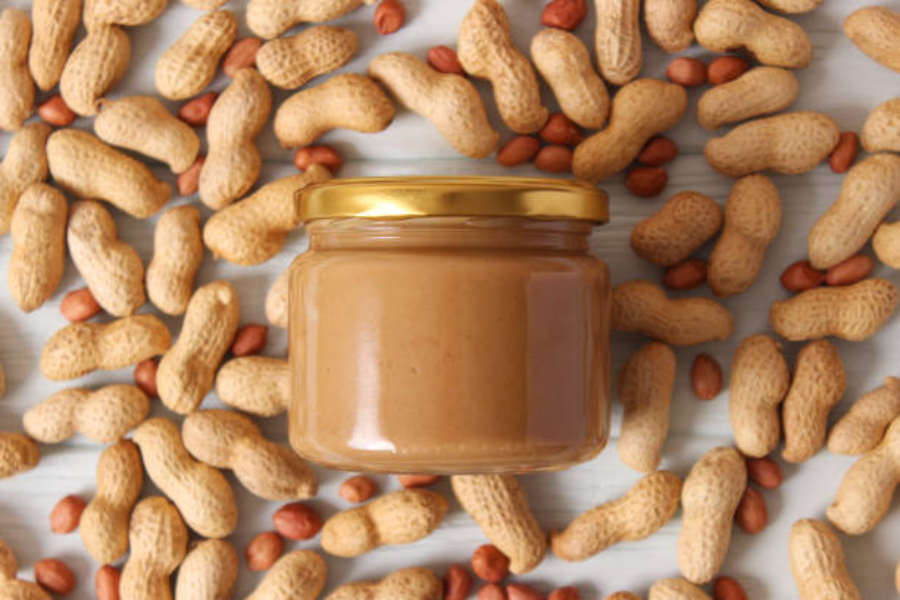
What Is Trans Fat?
Trans fat is a form of unsaturated fat that is found in many manufactured foods that we consume in our daily lives, such as microwave popcorn, French fries, deep-fried chicken, commercially made cakes and cookies, frozen pizza and more. Trans fats are also naturally present in small quantities in some dairy and meat products, and they too are known to be harmful for us – however, there are more studies required to prove it. Let us learn more about how trans fats can impact our health:
What are Trans Fats?
Trans fats are artificially created in industries where hydrogen is added to vegetable oil. This process tends to solidify the oil at room temperature. This hydrogenated oil adds to the shelf life of food products made using it. The main reason industries are so fond of using this hydrogenated oil is because it is cheap.
Trans fats, also known as trans-fatty acids, are harmful fats that can negatively impact the body. They are known to raise LDL (bad cholesterol) levels while lowering HDL (good cholesterol) levels. This imbalance increases the risk of heart disease, stroke, and type 2 diabetes.
A 2020 study published in the Journal of the American Heart Association confirmed that high consumption of trans fats is associated with a 34% increase in cardiovascular-related mortality. Another 2019 study by the World Health Organization (WHO) emphasized that eliminating trans fats from food could prevent up to 500,000 deaths annually worldwide from heart disease.
There are two types of fibre: soluble and insoluble. Both types contribute to digestive health in different ways.
History of Trans Fats
The history and discovery of trans fats date back to the early 20th century when they were developed as a cheaper and more stable alternative to animal fats like butter and lard. In 1901, a German chemist named Wilhelm Normann discovered the process of hydrogenation, which allows liquid vegetable oils to be turned into solid or semi-solid fats. This process became commercially viable in 1911 when Procter & Gamble introduced Crisco, the first hydrogenated vegetable shortening, marking the beginning of the widespread use of trans fats.
The motivation behind the development of trans fats was to create fats that were more shelf-stable and resistant to spoilage, which was highly desirable for processed foods. Hydrogenated oils also improve the texture and flavour of foods, making them popular in baked goods, margarine and fried foods. During World War II, as butter and animal fats were in short supply, the use of trans fats surged.
For decades, trans fats have been hailed as a revolutionary innovation, especially in the food industry, due to their versatility and cost-effectiveness. However, by the late 20th century, scientific studies began linking trans fats to negative health outcomes, particularly heart disease. This led to increasing scrutiny, and eventually, major public health organisations like the World Health Organization (WHO) and the U.S. Food and Drug Administration (FDA) recognised trans fats as harmful, leading to regulatory actions and bans.
How are Trans Fats Produced?
Trans fats are primarily created through a process called hydrogenation. This process involves adding hydrogen atoms to liquid vegetable oils to make them more solid or semi-solid. Here is how it works:
Hydrogenation Process
Liquid vegetable oils are heated in the presence of a catalyst, usually nickel and hydrogen gas.
The hydrogen atoms are added to the carbon-carbon double bonds in the oil molecules, transforming them from unsaturated to saturated fats.
This process increases the oil’s stability and shelf life, which is why hydrogenated oils are commonly used in processed foods.
Partial vs. Full Hydrogenation
Partial Hydrogenation: This method does not fully saturate the oil, leading to the formation of trans fats. Partial hydrogenation creates a blend of saturated fats and trans fats, which are more solid at room temperature.
Full Hydrogenation: This process fully saturates the oil, resulting in a fat that does not contain trans fats. However, fully hydrogenated oils are less commonly used due to their less desirable texture and stability compared to partially hydrogenated oils.
and hydration not only supports gut health but also promotes overall well-being by maintaining regular bowel movements and preventing digestive discomfort.
Application in Food
Partially hydrogenated oils are used in a variety of processed foods, including baked goods, margarine, and fried foods, due to their texture, flavour stability, and longer shelf life.
Understanding the production process helps explain why trans fats are prevalent in many processed and packaged foods. It highlights the importance of regulatory efforts to reduce their presence in the food supply.
How Much Fibre is Needed
The amount of fibre needed depends on factors like age, gender and overall health. However, general guidelines suggest that women should aim to consume about 25 grams of fibre per day while men should aim for around 38 grams. It is important to increase fibre intake gradually to prevent bloating or discomfort.
Labelling and Identification of Trans Fats
Understanding how to read food labels to identify trans fats is crucial for avoiding them in your diet. In many countries, food manufacturers are required to list trans fat content on the Nutrition Facts label. This makes it easier for consumers to identify and avoid foods containing trans fats. However, there is a significant loophole—if a product contains less than 0.5 grams of trans fats per serving, it can be labelled as 0 grams on the packaging. This means that even foods claiming to be free of trans fats can still contain small amounts, especially if multiple servings are consumed.
To fully avoid trans fats, it is important to check the ingredients list for “partially hydrogenated oils,” which is a common source of trans fats. This term signals the presence of trans fats even if the label says 0 grams. Common foods that may contain trans fats include margarine, snack foods, baked goods and some fried items. By carefully reading labels and avoiding partially hydrogenated oils, consumers can significantly reduce their intake of these harmful fats.
As awareness of the dangers of trans fats has increased, many food manufacturers have reformulated their products to remove or reduce trans fats, but vigilance is still required due to this labelling loophole.
How Trans Fats Harm Our Health?
Trans fats are a harmful type of fat commonly found in processed and fried foods, known for their negative impact on health.
Cholesterol Imbalance – Trans fats significantly raise levels of LDL (bad cholesterol), which contributes to plaque build-up in the arteries. At the same time, they lower HDL (good cholesterol), which is necessary for removing excess cholesterol from the bloodstream. This harmful combination accelerates the development of atherosclerosis, a condition where arteries become clogged, leading to cardiovascular complications.
Heart Disease and Stroke – The imbalance in cholesterol levels caused by trans fats increases the likelihood of plaque formation in blood vessels. As plaque builds up, it narrows the arteries and restricts blood flow, which can lead to heart disease and increase the risk of heart attacks or strokes. Even small amounts of trans fats in the diet can significantly elevate this risk over time.
Inflammation – Trans fats are known to trigger inflammation in the body, which is a major factor in many chronic diseases. Inflammation can affect blood vessels and contribute to the development of heart disease. It is also linked to conditions like arthritis and other inflammatory disorders, where the body’s immune response becomes overactive.
Type 2 Diabetes – Consuming trans fats can impair the body’s ability to properly regulate blood sugar, leading to insulin resistance. This means that the body’s cells don’t respond effectively to insulin, which can result in elevated blood sugar levels and eventually contribute to the development of type 2 diabetes.
Global Awareness and Health Initiatives on Trans Fats
The harmful effects of trans fats have been well-documented through extensive research. Numerous studies have consistently shown the risks posed by even small amounts of trans fat intake. A 2020 study published in the American Journal of Clinical Nutrition demonstrated a clear link between trans fats and an increased risk of cardiovascular disease, emphasising that even minimal consumption can have serious long-term health consequences.
In response to this growing body of evidence, global health organisations like the World Health Organization (WHO) have prioritised the elimination of industrial trans fats. The WHO has launched initiatives aimed at removing trans fats from the global food supply, estimating that doing so could prevent hundreds of thousands of deaths each year from cardiovascular diseases. This global awareness is driving countries and food manufacturers to reformulate products and improve public health outcomes.
Reducing Trans Fat Intake and Healthier Alternatives
To reduce trans fat intake, we can start by being vigilant about reading food labels. Look for terms like partially hydrogenated oils on ingredient lists, which indicate the presence of trans fats. Aim to minimise consumption of processed and fried foods, such as baked goods, margarine and snack items, which are often high in trans fats. Additionally, choosing whole, unprocessed foods like fruits, vegetables, lean meats and whole grains can help you avoid hidden sources of trans fats.
For healthier alternatives, opt for fats that are beneficial to your heart. Replace trans fats with unsaturated fats found in olive oil, avocado oil and nut oils, which can improve cholesterol levels and reduce inflammation. Incorporate sources of omega-3 fatty acids, such as fatty fish (salmon, mackerel) and flaxseeds, into your diet. These alternatives not only help maintain a healthy cholesterol balance but also provide essential nutrients that support overall well-being.









